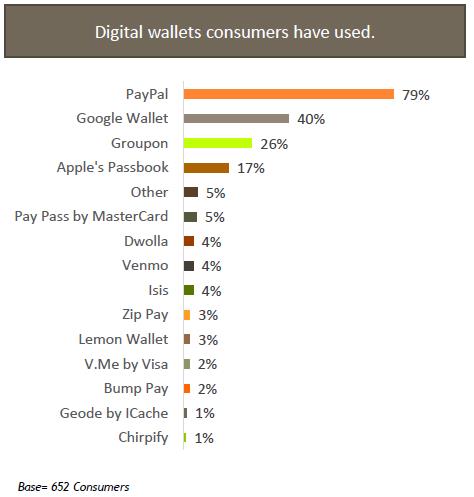SMBs Should Jump On The Mobile Payments Train In 2015
2014 has been a big year for mobile payments. With the introduction of Apple Pay, mobile payments are becoming increasingly popular and are receiving more exposure than ever. In the coming year, mobile payments have the opportunity to be a $540B market, according to a report from Thrive Analytics, Changing Landscape of Mobile Payments, with […]
2014 has been a big year for mobile payments. With the introduction of Apple Pay, mobile payments are becoming increasingly popular and are receiving more exposure than ever.
In the coming year, mobile payments have the opportunity to be a $540B market, according to a report from Thrive Analytics, Changing Landscape of Mobile Payments, with $240B from U.S. mobile purchases and value-added services, and the remaining $300B coming from a percentage of the small transactions space (less than $25).
Consumer Perception and Adoption
Digital wallets and mobile payments are slowly becoming popular payment options for consumers — 78% of consumers are aware of digital wallets, but only 32% have used them, according to Thrive Analytics’ Digital Wallet Usage Study.
For those that do make use of their digital wallet, 91% say they’ve had a positive experience and described the process as easy, simple, convenient and quick.
Paypal, Google Wallet and Apple’s Passbook are the most popular options, with 70% of consumers using them on a monthly basis (at the minimum), according to the Digital Wallet Usage Study.
Digital wallets are largely used for ecommerce transactions, but also serve as storage for the user’s credentials and commerce related items such as loyalty cards and coupons.
As the local space becomes a cashless marketplace, transactions increasingly are completed with a mobile device. Payment for those transactions might be through an app like Uber or at a point of sale terminal through Apple Pay.
Mobile devices are the most popular device for digital payments and other use of digital wallets, with 53% of consumers using their phone, according to the Digital Wallet Usage Study.
Laptops (40%) and tablets (7%) are also used to access digital wallets. Mobile access will only increase and hence mobile payments will continue to dominate digital payments.
Mobile payments are most frequently used for low-cost items, with 26% of transactions valuing $10 or less and an additional 44% of transactions amounting $11 to $30. Popular items purchased via mobile payments include coffee, drinks or snack foods, clothes, shoes and jewelry and groceries.
Early adopters of mobile payments from the merchant side have had great success – at Starbucks, for example, 15% of revenue is from mobile payments and that number is growing at 20% per quarter.
Local Retailers And Mobile Payments
Consumers already use their phones for everything, so why wouldn’t payments be added to the list? Yet currently, only 33% of SMBs accept mobile payments, according to Thrive Analytics and Street Fight’s 2014 Local Merchant Report.
With the ever-growing and evolving mobile payment landscape, local retailers should, sooner rather than later, adopt mobile payment methods to keep up with the trend and remain relevant and competitive in the market.
As the commonality of mobile payments increase, consumers will more and more demand them and search for businesses that offer mobile payment. Mobile payments also provide opportunities for merchants by opening up new avenues for revenue and providing data to better understand customers.
The adoption of digital payment services and the brands associated with these services, such as Apple Pay and Google Wallet, also bring credibility, trust and recognition of brands that consumers identify with and merchants can use to enhance search results or listings. Early adopters also reap the benefits of loyalty by those who seek out and rely on their phones to handle more daily tasks and transactions.
Square, a credit card reader that currently allows merchants to accept credit card payments on a smartphone or tablet via an attachable reader and a corresponding app, recently announced that the service will support Apple Pay in 2015, bringing the popular mobile payment method to SMBs. Using Square to accept Apple Pay will allow SMBs to keep costs low and requires minimum training for employees.
Mobile payments allow searches to lead to better conversions of search-to-sale by capitalizing on the impulse, spur-of-the-moment purchase. Ability to make purchases online or via an app allows consumers to purchase a product in the instant that they want it, quickly and without leaving the site or the app.
As personalization and targeting becomes more relevant to marketers, mobile payments create a new method for merchants to collect data about the consumer, although privacy and other issues may come in to play.
If you are conscious of these concerns and use the data smartly, this knowledge, which may include phone numbers or purchase history, can enable your business to offer targeted, relevant discounts, deals and marketing to specific individuals.
Opinions expressed in this article are those of the guest author and not necessarily MarTech. Staff authors are listed here.
Related stories
New on MarTech


